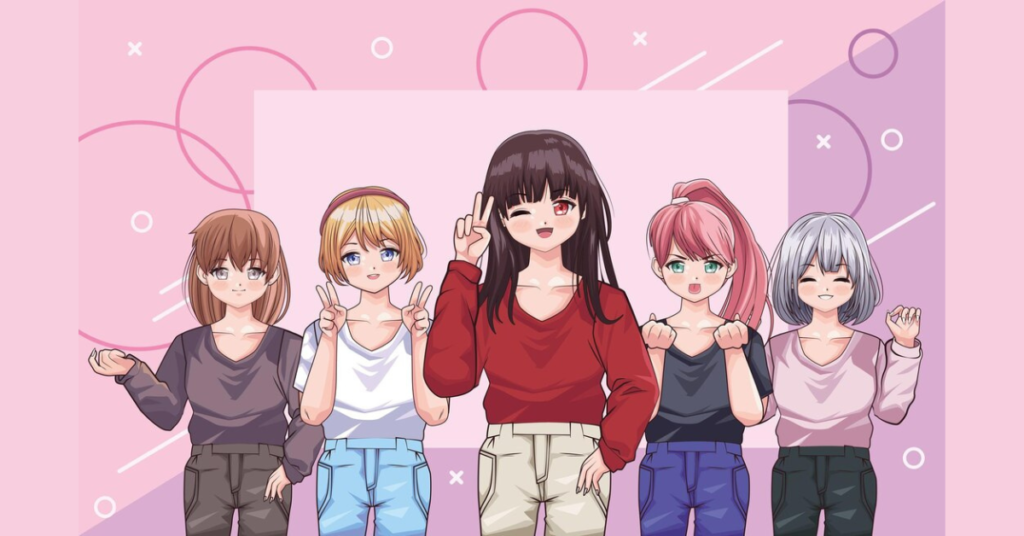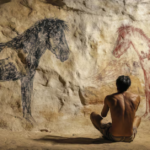Manga hentai, a genre of Japanese graphic novels and comics, is known for its explicit adult content. It has gained international popularity despite its controversial nature. This comprehensive analysis delves into the history, characteristics, cultural impact, legal aspects, and future prospects of manga hentai, offering an in-depth understanding of its role in the broader landscape of adult entertainment and manga culture.
Historical Background of Manga Hentai
Early Roots
Manga, as a medium, has a rich history dating back to the 12th century, but the specific genre of hentai manga emerged much later.
- Pre-Modern Art: The roots of hentai can be traced to Japanese erotic art known as shunga, which flourished during the Edo period (1603-1868). Shunga often depicted explicit sexual scenes and was widely accepted among all social classes.
- Modern Manga: The modern form of manga developed in the early 20th century, influenced by Western comic strips and Japanese artistic traditions. The genre of manga hentai, however, did not become prominent until the latter half of the century.
Emergence in the 20th Century
Manga hentai began to take shape in the 1960s and 1970s, coinciding with significant social and cultural changes in Japan.
- Economic Growth: Post-World War II economic growth in Japan led to increased leisure time and disposable income, fueling the demand for diverse forms of entertainment, including adult content.
- Changing Attitudes: The 1960s and 1970s saw a shift in societal attitudes towards sex and sexuality, with a growing acceptance of more explicit material in media. This period also marked the rise of gekiga, a style of manga characterized by its realistic and often adult-oriented themes.
Popularization in the 1980s and 1990s
The 1980s and 1990s were pivotal decades for the popularization of manga hentai, both domestically and internationally.
- Publishing Boom: The manga industry experienced a boom during this period, with the emergence of numerous magazines and anthologies dedicated to adult content. Publishers like Shobunkan and Core Magazine played significant roles in popularizing hentai manga.
- International Reach: Manga hentai’s began to reach international audiences through the distribution of Japanese manga and the rise of the internet. English translations and scanlations (fan translations) made the genre accessible to non-Japanese readers, contributing to its global popularity.
Characteristics of Manga Hentai
Manga hentai is characterized by several distinctive features that set it apart from other genres of manga.
Artistic Style
The artistic style of hentai manga varies widely, but certain common elements can be identified.
- Detailed Artwork: Hentai manga’s often features highly detailed and elaborate artwork, with a focus on anatomy and facial expressions to enhance the erotic appeal.
- Varied Aesthetics: Artists employ a range of styles, from realistic to highly stylized, to cater to different tastes and preferences. Some works are known for their exaggerated proportions and expressions, while others strive for more realistic depictions.
Themes and Content
Hentai manga explores a wide array of themes and scenarios, often pushing the boundaries of conventional storytelling.
- Fantasy and Science Fiction: Many hentai manga’s incorporate elements of fantasy and science fiction, creating imaginative and often surreal scenarios. These can include mythical creatures, futuristic settings, and supernatural abilities.
- Taboo Topics: The genre is known for its willingness to explore taboo subjects, such as incest, BDSM, and non-consensual encounters. This exploration of taboo topics is a defining characteristic of hentai manga.
- Romance and Erotica: While explicit sexual content is a hallmark of hentai manga’s, many works also incorporate elements of romance and erotica, focusing on the emotional and psychological aspects of sexual relationships.
Narrative Techniques
The storytelling techniques in hentai manga are as varied as the themes and artistic styles.
- Character Development: Despite the focus on explicit content, many hentai manga’s invest in character development, creating complex and multi-dimensional characters. This adds depth to the narrative and enhances the reader’s engagement.
- Plot-Driven Stories: Some hentai manga’s feature intricate plots that go beyond mere sexual encounters, incorporating elements of mystery, adventure, and drama. These plot-driven stories appeal to readers looking for more than just erotic content.
- Visual Symbolism: Hentai manga often employs visual symbolism to convey deeper meanings and themes. This can include the use of specific colors, motifs, and visual metaphors to enhance the storytelling.
Cultural Impact of Manga Hentai
Manga hentai’s has had a significant impact on both Japanese culture and the broader global perception of manga.
Domestic Influence
In Japan, hentai manga occupies a unique position within the broader manga industry and cultural landscape.
- Acceptance and Stigma: While explicit content is more culturally accepted in Japan than in many Western countries, hentai manga’s still exists on the fringes of mainstream acceptance. It is both a popular form of entertainment and a subject of societal stigma.
- Cultural Reflection: Hentai manga’s often reflects and critiques Japanese societal norms and values, particularly regarding sex and sexuality. It can serve as a form of social commentary, exploring themes like sexual repression, power dynamics, and the complexities of human desire.
Global Influence
The international reach of hentai manga has contributed to the global perception of manga and Japanese culture.
- Perception of Manga: Hentai manga’s has played a role in shaping the global perception of manga as a diverse and multifaceted medium. It has introduced international audiences to the breadth of storytelling and artistic expression within Japanese manga.
- Cultural Exchange: The popularity of hentai manga outside Japan has facilitated cultural exchange, with non-Japanese artists and creators drawing inspiration from the genre. This has led to the creation of hentai-inspired works in various forms of media, including comics, animation, and digital art.
Legal Aspects and Controversies
Manga hentai exists within a complex legal and regulatory framework, facing various controversies and challenges.
Legal Regulations in Japan
The legal status of hentai manga in Japan is governed by a combination of national laws and industry self-regulation.
- Obscenity Laws: Japanese obscenity laws, which date back to the Meiji era, prohibit the depiction of explicit genitalia. To comply with these laws, hentai manga’s often employs censorship techniques such as pixelation, black bars, and strategic shading.
- Industry Self-Regulation: The hentai manga industry has developed its own self-regulatory mechanisms, including content ratings and voluntary guidelines. Organizations like the Ethics Organization of Computer Software (EOCS) play a role in monitoring and regulating explicit content.
International Legal Challenges
The distribution and consumption of hentai manga’s outside Japan are subject to the legal frameworks of different countries.
- Censorship and Bans: Some countries have strict obscenity laws that prohibit the importation and distribution of hentai manga. This has led to censorship and bans in certain regions, complicating the international availability of the genre.
- Child Exploitation Concerns: Hentai manga’s has faced scrutiny and legal challenges due to depictions of underage characters. While these characters are fictional, concerns about child exploitation and the potential impact on real-world behavior have prompted legal actions and restrictions in some countries.
Ethical and Moral Controversies
Beyond legal issues, hentai manga is the subject of ongoing ethical and moral debates.
- Artistic Expression vs. Exploitation: Supporters of hentai manga argue that it is a form of artistic expression that explores complex and taboo subjects. Critics, however, contend that it can perpetuate harmful stereotypes and exploitative narratives.
- Impact on Society: The potential impact of hentai manga’s on societal attitudes towards sex and relationships is a contentious topic. Some studies suggest that exposure to explicit content can influence behavior and attitudes, while others argue that there is no clear causal link.
The Future of Manga Hentai
The future of hentai manga’s will be shaped by various factors, including technological advancements, evolving societal attitudes, and legal developments.
Technological Innovations
Technological advancements will continue to influence the creation, distribution, and consumption of hentai manga.
- Digital Platforms: The rise of digital platforms and e-publishing has made hentais’ manga more accessible to a global audience. This trend is likely to continue, with digital distribution becoming the primary mode of consumption.
- Virtual Reality (VR) and Augmented Reality (AR): Emerging technologies like VR and AR have the potential to revolutionize the hentai manga experience, creating immersive and interactive narratives that go beyond traditional print media.
- Artificial Intelligence (AI): AI technologies can enhance the creation of hentai manga by automating certain aspects of the artistic process, such as coloring and animation. AI-driven personalization can also tailor content recommendations to individual preferences.
Evolving Societal Attitudes
Changes in societal attitudes towards sex, sexuality, and media consumption will impact the future of hentai manga’s.
- Increased Acceptance: As societal attitudes towards sex and explicit content continue to evolve, there may be greater acceptance of hentai manga’s as a legitimate form of artistic expression and entertainment.
- Gender and Diversity: There is a growing demand for more diverse and inclusive representation in media, including hentai’s manga. This includes greater visibility for LGBTQ+ characters and narratives, as well as more nuanced portrayals of gender and sexuality.
Legal and Regulatory Developments
The legal landscape surrounding hentai manga’s will continue to evolve, influenced by both national and international developments.
- Regulatory Changes: Changes in copyright and obscenity laws, as well as international efforts to combat online piracy, will shape the legal environment for hentai manga’s. This includes potential shifts towards greater regulation and enforcement.
- Industry Adaptation: The hentai manga’s industry will need to adapt to these legal changes, finding ways to comply with regulations while maintaining creative freedom. This may involve new approaches to censorship, content ratings, and distribution models.
Conclusion
Manga hentai is a complex and multifaceted genre that occupies a unique position within the broader landscape of manga and adult entertainment. Its rich history, distinctive characteristics, and cultural impact make it a subject of both fascination and controversy. As technological innovations, societal attitudes, and legal frameworks continue to evolve, the future of hentai manga will be shaped by these dynamic forces. Despite the challenges it faces, hentai manga remains a vibrant and influential genre that reflects the complexities of human sexuality and artistic expression.







